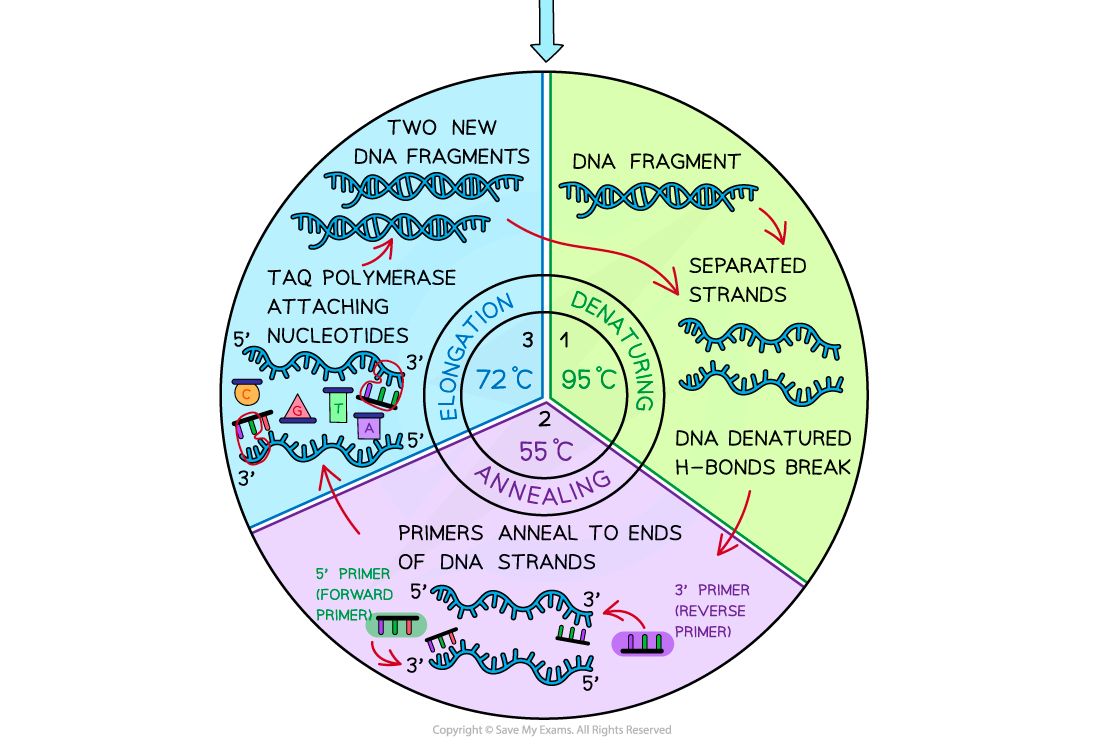Polymerase Chain Reaction (Cambridge (CIE) A Level Biology): Revision Note
Exam code: 9700
Polymerase chain reaction (PCR)
Polymerase chain reaction (PCR) is a common molecular biology technique used in most applications of gene technology, for example, DNA profiling (eg. identification of criminals and determining paternity) or genetic engineering
It can be described as an in vitro method of DNA amplification
It is used to produce large quantities of specific fragments of DNA or RNA from very small quantities (even just one molecule of DNA or RNA)
By using PCR, scientists can have billions of identical copies of the DNA or RNA sample within a few hours
The PCR process involves three key stages per cycle. In each cycle, the DNA is doubled so in a standard run of 20 cycles a million DNA molecules are produced
The three stages are undertaken in a PCR instrument (or thermal cycler) which automatically provides the optimal temperature for each stage and controls the length of time spent at each stage
Requirements of PCR reaction
Target DNA or RNA being amplified
Primers (forward and reverse) – these are short sequences of single-stranded DNA that have base sequences complementary to the 3’ end of the DNA or RNA being copied
Primers define the region that is to be amplified by signalling to the DNA polymerase where to begin building the new strands
DNA polymerase – is the enzyme used to build the new DNA or RNA strand
The most commonly used polymerase is Taq polymerase as it comes from a thermophilic bacterium Thermus aquaticus which means it does not denature at the high temperature involved during the first stage of the PCR reaction
Secondly, its optimum temperature is high enough to prevent annealing of the DNA strands that have not been copied yet
Free nucleotides – used in the construction of the DNA or RNA strands
Buffer solution – to provide the optimum pH for the reactions to occur in
Stages of PCR reaction
Denaturation – the double-stranded DNA is heated to 95°C which breaks the hydrogen bonds that bond the two DNA strands together
Annealing – the temperature is decreased to between 50 - 60°C so that primers (forward and reverse ones) can anneal to the ends of the single strands of DNA
Elongation / Extension – the temperature is increased to 72°C for at least a minute, as this is the optimum temperature for Taq polymerase to build the complementary strands of DNA to produce the new identical double-stranded DNA molecules


Examiner Tips and Tricks
It is important to know the three stages and the temperatures the reactions occur at during the different stages. You must also know why the Taq polymerase is used in PCR.

Unlock more, it's free!
Did this page help you?